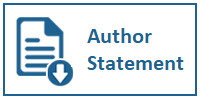CULTIVATING ORGANIZATIONAL COMMITMENT: THE IMPACT OF EMOTIONAL LABOR AND THE MEDIATING ROLE OF EMOTIONAL EXHAUSTION
DOI:
https://doi.org/10.31937/manajemen.v15i2.3298Abstract
Abstract - The study aims to understand better the connections between emotional labor and emotional exhaustion and the relationship between affective organizational commitment and emotional exhaustion. Also, this study examines the mediating role of emotional exhaustion between emotional labor and affective organizational commitment. Researching how emotional laborers deal with their day-to-day difficulties in managing their emotions and understanding strategies and factors impacting their stress levels will help organizations create policies and practices that support employees in managing their emotions and well-being. This study examines the mediating effect of emotional exhaustion on emotional labor and affective organization commitment. The respondents are heterogeneous and come from a range of industries. The design of this investigation was based on a quantitative methodology. Structural Equation Modelling-Partial Least Squares (SEM-PLS) examined the causal link among variables. The data was collected through Google Forms, and 136 responses were collected. This study revealed that emotional labor positively affects emotional exhaustion, showing that employees who use a surface-acting strategy typically experience higher levels of emotional exhaustion. The relationship between emotional exhaustion and organizational commitment is mediated by emotional exhaustion. Emotional exhaustion negatively affects affective organizational commitment. The researcher learned that surface acting in emotional labor significantly contributes to emotional exhaustion. It is also important for leaders to understand the factors leading to emotional exhaustion and how leaders can mitigate the risk of employees getting emotionally exhausted.
Keywords: Affective Organizational Commitment; Emotional Exhaustion; Emotional Labor; Organizational; Commitment
Downloads
Downloads
Published
How to Cite
Issue
Section
License
Authors retain copyright and grant the journal right of first publication with the work simultaneously licensed under a Creative Commons Attribution-ShareAlike International License (CC-BY-SA 4.0) that allows others to share the work with an acknowledgement of the work's authorship and initial publication in this journal.
Authors are able to enter into separate, additional contractual arrangements for the non-exclusive distribution of the journal's published version of the work (e.g., post it to an institutional repository or publish it in a book), with an acknowledgement of its initial publication in this journal.















